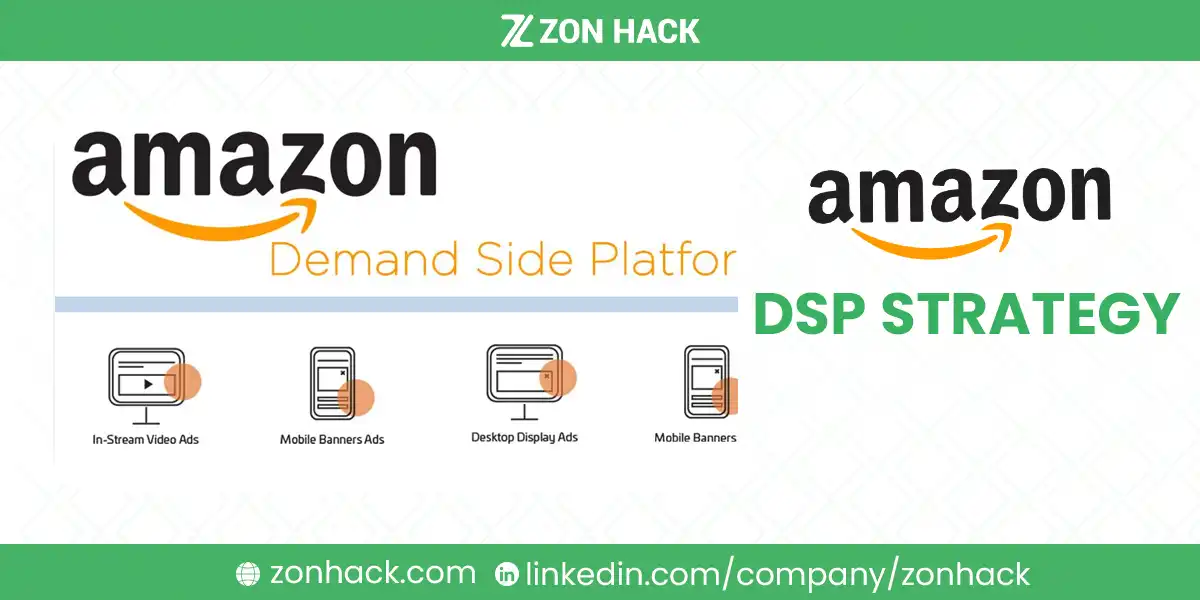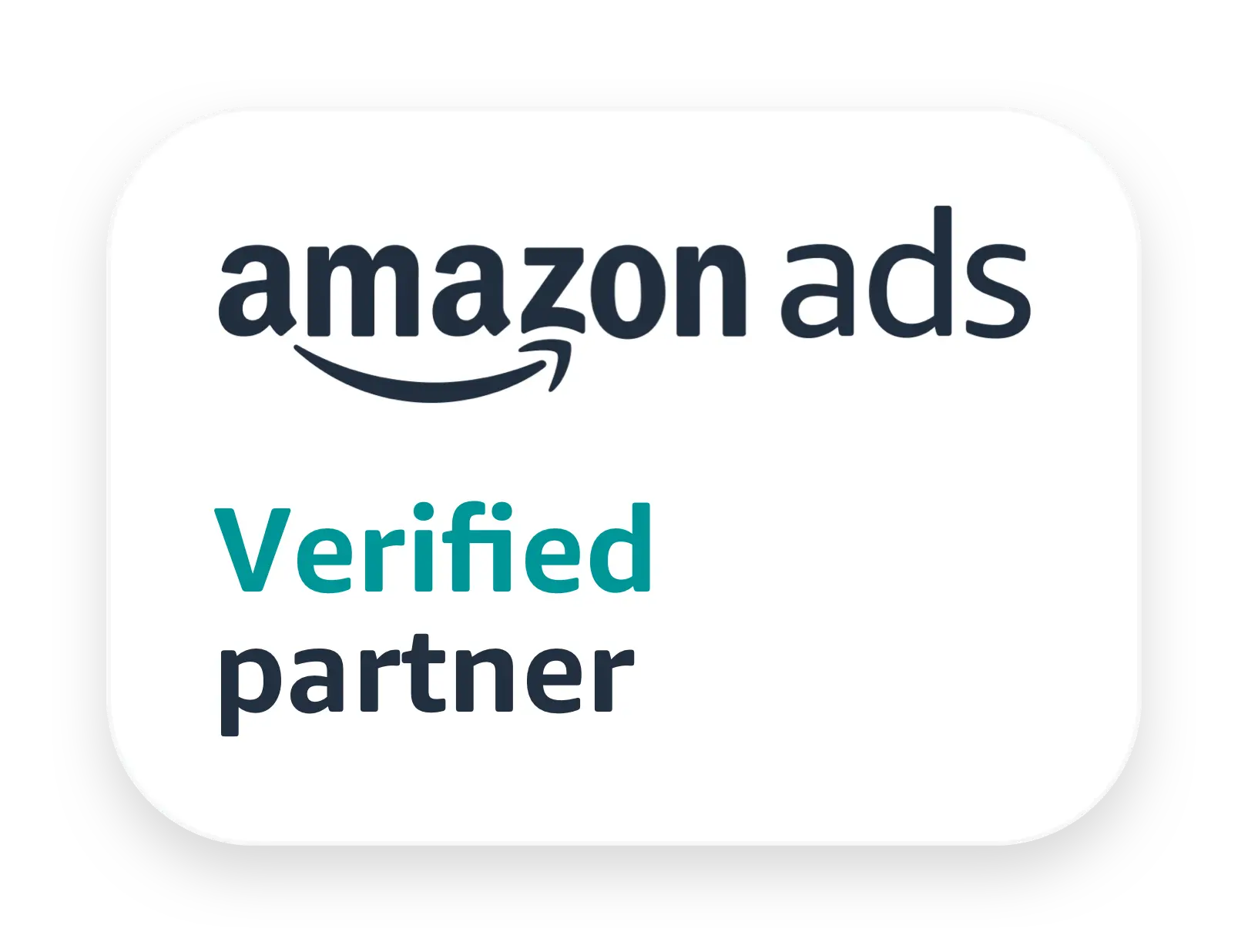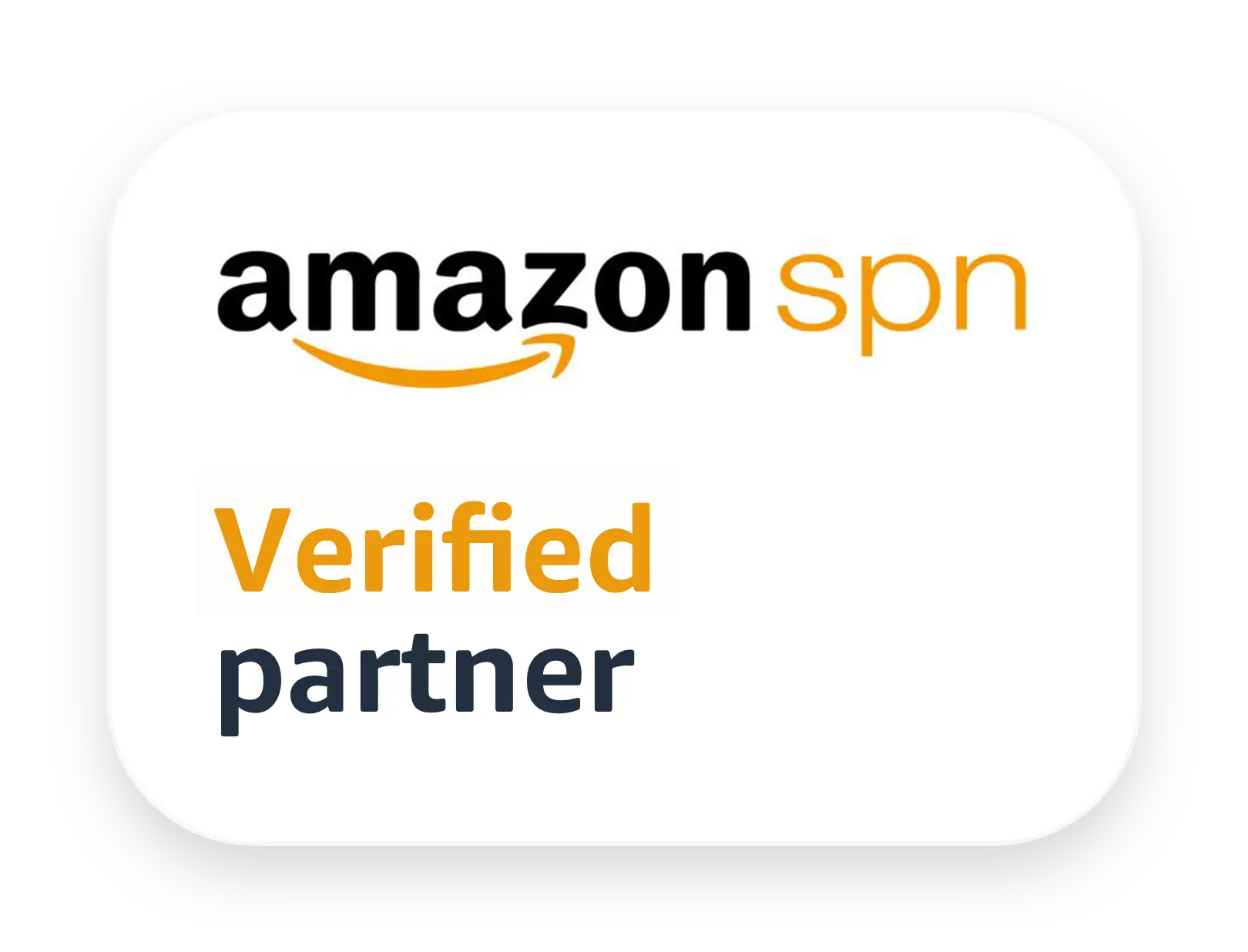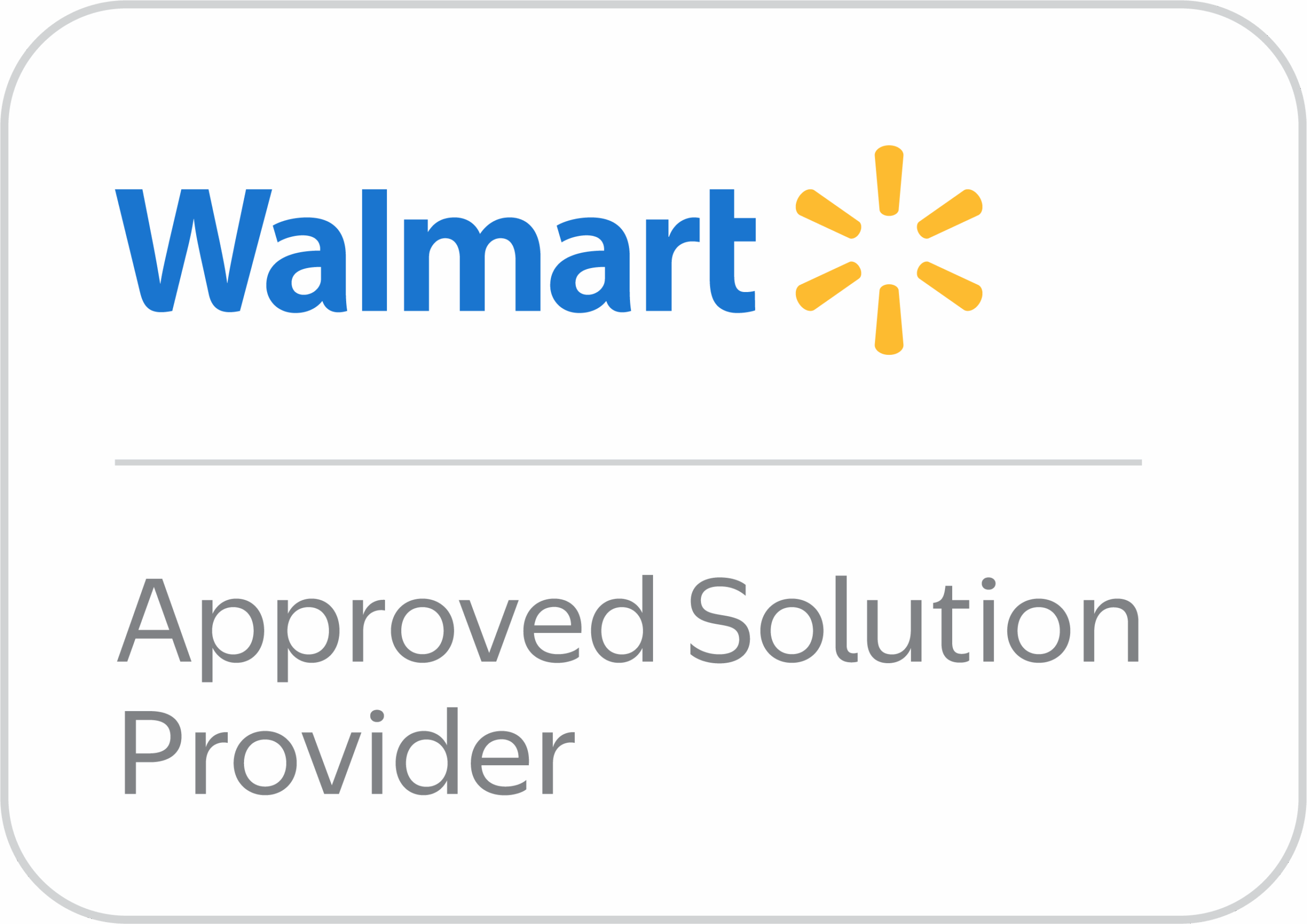In 2025, programmatic advertising has become more than a tool—it’s the engine driving digital marketing performance. Brands no longer rely solely on manual media buying or traditional platforms. Instead, they leverage AI-powered, real-time bidding systems to target the right consumers with precision and speed.
At the center of this evolution is Amazon DSP (Demand-Side Platform). Unlike other DSPs, Amazon brings a unique edge: a blend of rich first-party shopping data and expansive media reach.
With Amazon DSP, brands can now advertise across:
- Amazon-owned properties like Amazon.com, Fire TV, IMDb, Prime Video, and Twitch
- Premium third-party websites and apps, via Amazon Publisher Services and exchanges
- Connected TV (CTV) platforms, where storytelling meets high-intent audiences
At ZonHack, we don’t just run DSP ads—we integrate them into full-funnel media strategies that drive both brand lift and sales. This holistic approach ensures that awareness efforts connect directly to revenue outcomes.
Why Amazon DSP Is a Must-Have in 2025
Amazon DSP isn’t just another channel. In 2025, it’s a centralized media engine for advertisers serious about scale. The reasons are clear:
- Expanded Reach: You’re not limited to Amazon. With one platform, you can run ads across the open web, mobile apps, CTV, and more.
- AI-Driven Personalization: Amazon’s machine learning models now surpass those of DV360 and The Trade Desk in retail-specific optimization.
- Retail Media Power: Real-time insights from Amazon’s shopping behavior data give brands a powerful advantage in decision-making.
- Global Efficiency: Amazon DSP works seamlessly across markets, including the US, UK, Canada, and others, with support for localization and currency management.
- Enhanced UI: The advertiser interface is now faster, more intuitive, and equipped with tools that make campaign management less of a grind.
As Amazon doubles down on ad tech, more brands are shifting budgets toward DSP—not just for retargeting but for enterprise-level awareness and acquisition.
Amazon DSP Benefits: What Makes It So Powerful
ZonHack helps brands unlock the full potential of Amazon DSP through strategy, execution, and optimization. Here’s what makes the platform so effective:
Unrivaled Audience Targeting
Amazon’s 1st-party data taps into over 300 million active shopper profiles. You can layer that with CRM data, in-market signals, lifestyle categories, and lookalike modeling for deep segmentation.
Exclusive Inventory Access
DSP users get access to premium Amazon inventory: Fire TV, Twitch, Prime Video ads, and more—inventory that Sponsored Ads can’t touch.
Advanced Analytics
It’s not just about clicks. You can measure:
- New-to-Brand (NTB) conversions
- Cross-device attribution
- Brand lift studies
All of this feeds into Amazon Marketing Cloud, enabling deeper custom analysis.
Cross-Market Scalability
Managing campaigns across regions has never been smoother. DSP supports automated localization, currency conversion, and performance benchmarking across territories.
Open to Non-Sellers
You don’t need to sell on Amazon to use DSP. DTC brands, CPGs, and even service businesses can reach Amazon audiences across the open web.
Full-Funnel Retargeting
Amazon DSP allows retargeting beyond just product views. You can retarget searchers, cart abandoners, brand viewers, and more—across formats and devices.
Amazon DSP Targeting Tactics for Full-Funnel Success
A one-size-fits-all strategy doesn’t work in DSP. Success comes from aligning targeting tactics with the funnel.
Top-of-Funnel (Awareness)
- Behavioral: Target based on recent browsing and shopping behavior
- Lifestyle and Interest: Reach users based on hobbies, interests, and patterns
- Life Events: New parents, job changers, new movers—all high-intent segments
- Device Type: Tailor offers based on mobile vs. desktop, or OS types
Mid-Funnel (Consideration)
- In-Market Audiences: These are shoppers actively looking for products like yours
- Contextual Targeting: Serve ads in relevant environments (e.g., health articles for a wellness product)
Bottom-Funnel (Conversion)
- Retargeting: Bring back users who browsed, searched, or added to cart but didn’t buy
- ASIN & Brand Halo: Retarget users who viewed or bought similar products
- Lookalike Modeling: Find new audiences similar to your highest-value customers
ZonHack Tip: Tailor your look-back windows based on the product’s purchase cycle. For high-ticket items, use longer attribution windows and confirm insights via Amazon Marketing Cloud.
Amazon DSP Bidding Strategies
Your bidding strategy determines your ad delivery pace, budget efficiency, and ultimately, ROAS.
Maximize Spend, Then Optimize
This method focuses on spending the budget quickly—ideal for brand awareness, seasonal pushes, or new product launches.
Use it when:
- You have fixed budgets
- Teams have limited time to manage campaigns daily
- Speed-to-market matters more than short-term ROAS
Prioritize Performance (ROAS, CPA)
This strategy optimizes bidding based on performance goals like conversions or NTB%. It requires:
- Flexible budgets
- Ongoing optimization
- Established benchmarks
At ZonHack, our DSP specialists combine automated bid modeling with manual pacing rules and budget reallocation techniques to ensure both scale and control.
Campaign Strategy & Optimization Playbook
Winning with DSP isn’t about launching and hoping. You need a playbook. Here’s ours:
Budget Planning
Plan ahead by:
- Splitting budgets seasonally
- Allocating by funnel stage (e.g., 30% awareness, 50% mid-funnel, 20% retargeting)
- Creating a risk buffer for tests
Creative Strategy
Run frequent A/B tests. Rotate creative assets dynamically. Make sure mobile design is prioritized, especially for lifestyle brands.
Performance Optimization
You can’t skip the basics:
- Adjust bids weekly based on placement ROAS
- Exclude unqualified audiences (past buyers, irrelevant categories)
- Use frequency caps (3–5 per user/week is the sweet spot)
Advanced Tactics
- Use AI Budgeting Tools to auto-allocate by performance
- Cross-Market Campaign Sync for multinational brands
- Enforce brand safety and fraud protection filters
- Apply dynamic bidding rules based on user intent and stage
ZonHack Insight: Want higher ROAS? Bid higher for Amazon placements, lower for off-Amazon. As users move deeper into the funnel, raise bids accordingly.
Creative Strategy: Best Practices for Ad Impact
In 2025, the quality of your creative assets is paramount. With Amazon DSP operating on a CPM model, engaging creatives directly influence ROI.
Static Ads
- High-Resolution Imagery: Ensure product images are clear and professionally shot.
- Clear Branding: Incorporate your logo and consistent color schemes.
- Compelling CTA: Use action-oriented language like “Shop Now” or “Discover More.”
- Design Considerations: Maintain a clean layout with appropriate borders, especially on light backgrounds.
Video Ads
- Immediate Branding: Display your logo within the first 2 seconds.
- Storytelling: Craft narratives that resonate emotionally with your audience.
- Optimal Length: Keep videos concise, ideally under 15 seconds.
- Early CTA: Introduce your call-to-action early to capture attention.
At ZonHack, our creative team specializes in developing assets tailored to Amazon’s specifications, ensuring compliance and maximizing engagement.
Campaign Setup: From Zero to Launch
A structured approach to campaign setup ensures efficiency and effectiveness.
Phase 1: Getting Started
- Market and Audience Selection: Identify target demographics and regions.
- Budget Allocation: Distribute funds across funnel stages appropriately.
- Team Coordination: Assign roles and establish approval processes.
- Compliance Checks: Ensure all assets meet Amazon’s advertising guidelines.
Phase 2: Build & Plan
- KPI Definition: Set clear objectives for each campaign.
- Creative Development: Produce multiple ad variants for testing.
- Audience Segmentation: Group audiences based on behavior and intent.
Phase 3: Launch
- Quality Assurance: Verify all elements before going live.
- Tracking Setup: Implement tracking mechanisms to monitor performance.
- Naming Conventions: Use consistent naming for easy reporting and analysis.
ZonHack’s meticulous onboarding process ensures campaigns are primed for success from the outset.
Performance Measurement & Analytics
Beyond basic metrics, deep analytics provide insights into campaign effectiveness.
- ROAS by Market: Benchmark returns across different regions and product categories.
- Click Metrics: Monitor CTR, CPC, and viewability to assess engagement.
- Conversion Metrics: Track CPA, New-to-Brand percentage, and repeat purchase rates.
- Holistic KPIs: Evaluate brand lift and customer lifetime value for long-term impact.
Utilizing tools like Amazon Marketing Cloud, ZonHack provides comprehensive dashboards for in-depth analysis.
Leveraging DSP Insights to Drive Growth
Amazon’s first-party shopper data is invaluable for refining strategies.
- Creative Feedback Loops: Identify which assets drive conversions.
- Audience Refinement: Determine the most responsive segments.
- Competitive Benchmarking: Analyze impression share against competitors.
- Media Planning: Forecast trends to inform future campaigns.
By harnessing these insights, brands can make data-driven decisions to optimize performance.
Mistakes to Avoid
Avoid common pitfalls that can hinder campaign success:
- Premature DSP Use: Ensure Sponsored Ads are optimized before scaling to DSP.
- Poor Audience Segmentation: Refine targeting to avoid wasted impressions.
- Neglecting Creative Testing: Regularly test and iterate ad creatives.
- Lack of Frequency Caps: Prevent ad fatigue by limiting exposures.
- Overlooking Past Buyers: Exclude existing customers from acquisition campaigns.
- Uniform Look-Back Windows: Customize based on product purchase cycles.
- Bundling Inventory: Separate on- and off-Amazon placements for clearer insights.
- Overreliance on Third-Party Audiences: Prioritize first-party data for accuracy.Reuters
ZonHack conducts thorough audits to preemptively address these issues.
Final Thoughts
In 2025, Amazon DSP stands as an essential tool for brands aiming to scale effectively. With its expansive reach, advanced targeting capabilities, and robust analytics, it offers unparalleled opportunities for growth.
At ZonHack, we specialize in crafting comprehensive DSP strategies that encompass creative development, precise targeting, and continuous optimization. Our goal is to drive measurable results and sustainable growth for your brand.
Ready to elevate your advertising strategy?
Book a free DSP strategy audit with ZonHack today and unlock your brand’s full potential.
Frequently Asked Questions
Do I need to sell products on Amazon to use Amazon DSP?
No, Amazon DSP is available to both sellers and non-sellers. Brands can leverage DSP to reach Amazon’s audience across various platforms, even if they don’t sell directly on Amazon.
How does Amazon DSP differ from Sponsored Ads?
While Sponsored Ads appear within Amazon’s marketplace, Amazon DSP allows for programmatic ad placements both on and off Amazon, offering broader reach and advanced targeting options.
What kind of support does ZonHack provide for DSP campaigns?
ZonHack offers end-to-end support, including strategy development, creative production, campaign management, and performance analysis to ensure optimal results.
How long does it take to see results from a DSP campaign?
Results can vary based on campaign objectives, but many brands begin to see significant improvements in reach and conversions within the first few weeks of launch.




